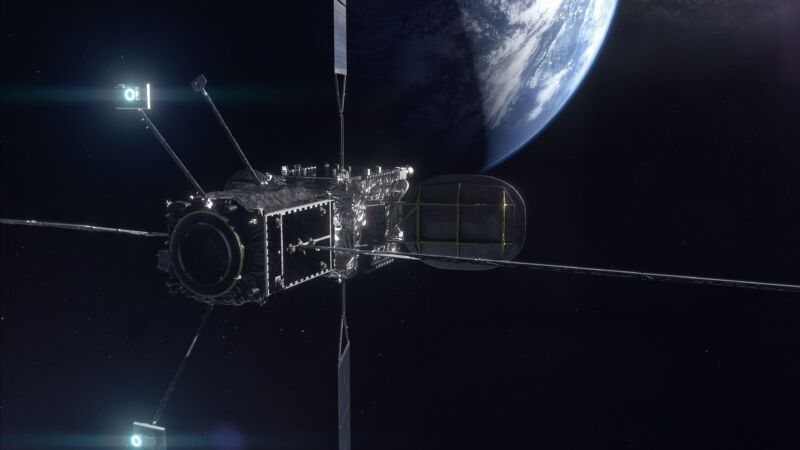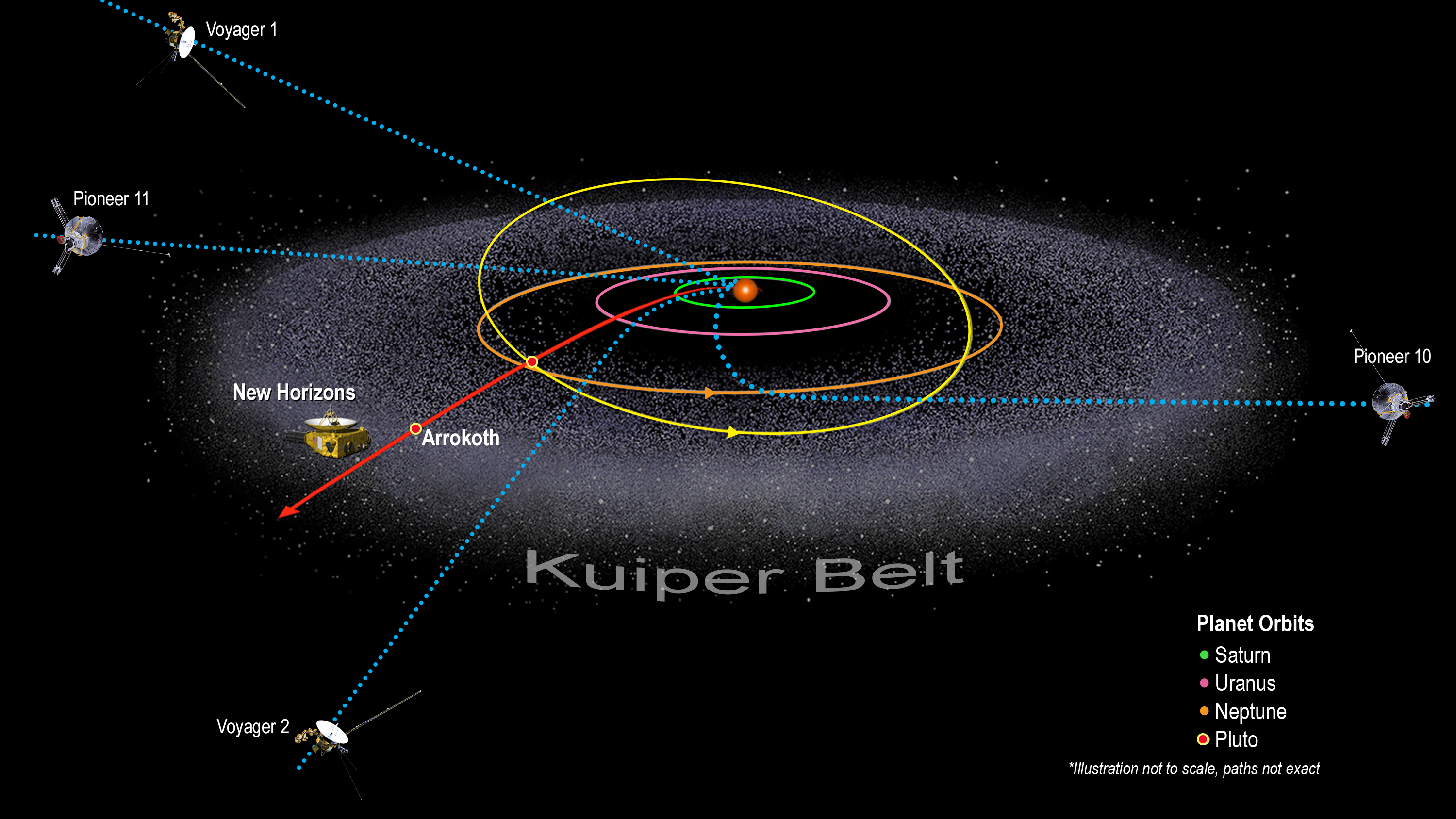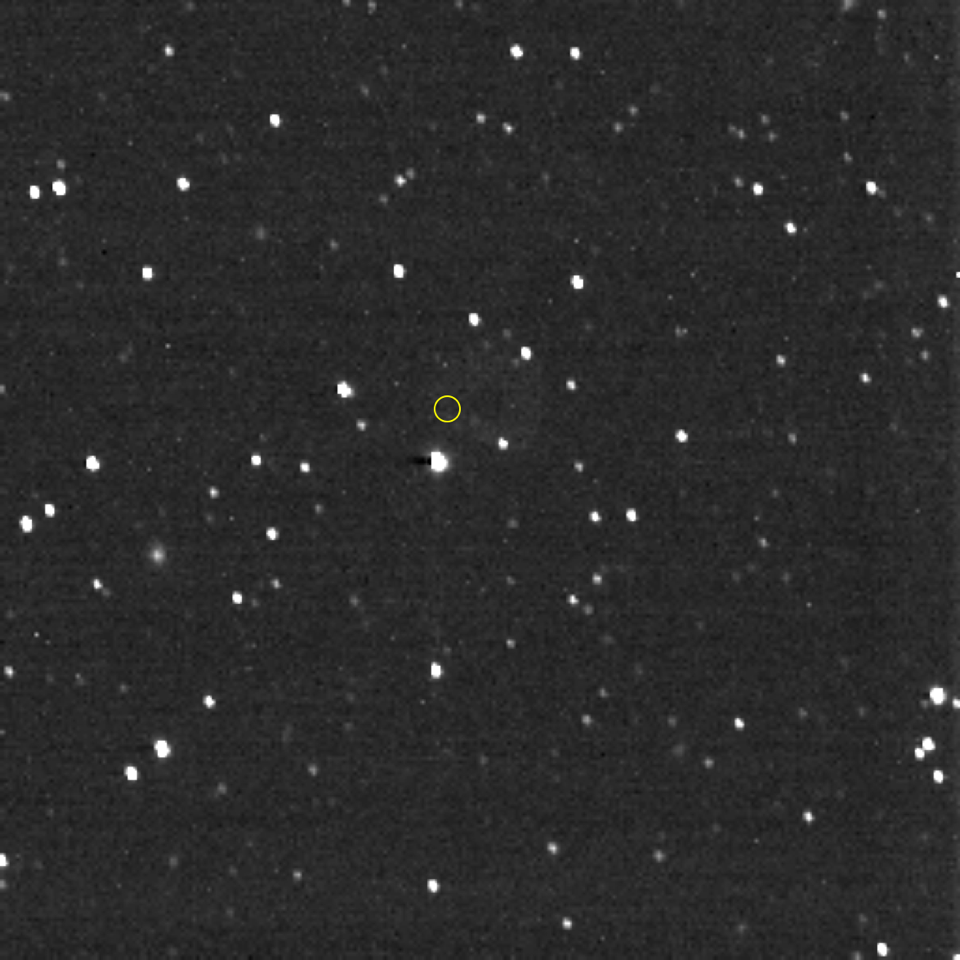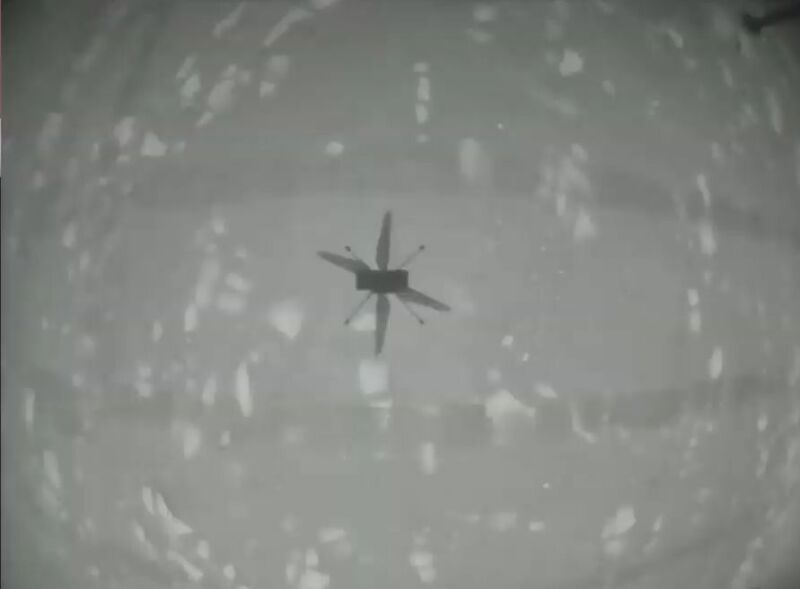| |

| Author |
Topic Options
|

 Posts:
Posts: 35256
 Posted: Posted: Wed Apr 07, 2021 1:38 pm
|

 Posts:
Posts: 35256
 Posted: Posted: Thu Apr 08, 2021 8:25 pm
|

 Posts:
Posts: 34979
 Posted: Posted: Mon Apr 12, 2021 7:49 pm
|

 Posts:
Posts: 51965
 Posted: Posted: Tue Apr 13, 2021 7:07 am
$1: The era of reusability in space has begun A large, passenger van-sized spacecraft sidled up to an active, 6-ton satellite on Monday afternoon about 36,000 km above the Earth's surface. Slowly, ever so slowly, the distance between the two vehicles closed. There was nothing wrong with the satellite, which is 17 years old and owned by Intelsat. All the while on Wednesday, it continued actively delivering broadband and other media services across Europe, the Middle East, and Africa. But it was running desperately low on fuel to maintain its position, and Intelsat would have soon had to send the vehicle to a "graveyard" orbit. And so Intelsat contracted with Northrop Grumman to test its new life extension services. That led to the launch of Northrop's "Mission Extension Vehicle-2" last year, which used fuel-sipping electric propulsion to approach the orbit of Intelsat 10-02 and dock with the active satellite on Wednesday. As a result of this pairing, the satellite will now live on for five more years. Jean-Luc Froeliger, vice president of space, space systems engineering and operations for Intelsat, said the cost of servicing is far less than the value of five additional years of satellite service. Waiting five years will also allow Intelsat to replace the 10-02 satellite with a more modern, efficient vehicle. "For us, it's win-win," he said during a teleconference with reporters. "This extension for 10-02 is very valuable to us." It's a win for Northrop Grumman as well. The company made history a year ago when its first mission extension vehicle docked with another Intelsat satellite, moved it from a graveyard orbit, powered it on, and placed it back into active service. No two commercial spacecraft had ever docked in orbit before. The difference Monday is that the servicing vehicle docked with an active satellite, in a busier orbit. Both of the mission extension vehicles will detach from their Intelsat targets in 2025 and move on to other satellites and have a functional lifetime until 2035. Northrop sold the first two mission-extension missions to a commercial customer, Intelsat. However, the company expects that much of its future business may come from governments seeking to protect and extend the life of their most valuable assets in space. “Government interest is accelerating as they see this capability bearing out,” said Tom Wilson, a vice president at Northrop Grumman, and president of its SpaceLogistics subsidiary. "We’re on the cusp of some bigger initiatives with them." https://arstechnica.com/science/2021/04 ... has-begun/
|

 Posts:
Posts: 35256
 Posted: Posted: Tue Apr 13, 2021 8:33 am
|

 Posts:
Posts: 51965
 Posted: Posted: Thu Apr 15, 2021 7:24 am
$1: We Just Got Unprecedented New Images of Supermassive Black Hole M87
Telescopes from across the globe have teamed up to take unprecedented images of supermassive black hole M87* as it blasts matter into space at 99 percent the speed of light.
This is the same famous black hole that was captured by the Event Horizon Telescope and unveiled in 2019.
That first release was a spectacular achievement. It took many years of work, and an array of radio telescopes that spanned the entire globe, combining their observations to image a region of space not much bigger than the Solar System from 55 million light-years away.
Now a team of scientists has added data from more telescopes across multiple wavelengths of light, each of which reveals different characteristics of the black hole M87* and the relativistic plasma jet it's blasting into space.
https://www.sciencealert.com/the-many-c ... black-hole
|

 Posts:
Posts: 35256
 Posted: Posted: Thu Apr 15, 2021 7:29 pm
|

 Posts:
Posts: 51965
 Posted: Posted: Fri Apr 16, 2021 7:44 am
$1: NASA’s New Horizons Reaches a Rare Space Milestone  In the weeks following its launch in early 2006, when NASA’s New Horizons was still close to home, it took just minutes to transmit a command to the spacecraft, and hear back that the onboard computer received and was ready to carry out the instructions. As New Horizons crossed the solar system, and its distance from Earth jumped from millions to billions of miles, that time between contacts grew from a few minutes to several hours. And on April 18 at 12:42 UTC (or April 17 at 8:42 p.m. EDT), New Horizons will reach a rare deep-space milepost -- 50 astronomical units from the Sun, or 50 times farther from the Sun than Earth is. Scale of the Solar System Here’s one way to imagine just how far 50 AU is: Think of the solar system laid out on a neighborhood street; the Sun is one house to the left of “home” (or Earth), Mars would be the next house to the right, and Jupiter would be just four houses to the right. New Horizons would be 50 houses down the street, 17 houses beyond Pluto! New Horizons is just the fifth spacecraft to reach this great distance, following the legendary Voyagers 1 and 2 and their predecessors, Pioneers 10 and 11. It’s almost 5 billion miles (7.5 billion kilometers) away; a remote region where one of those radioed commands, even traveling at the speed of light, needs seven hours to reach the far flung spacecraft. Then add seven more hours before its control team on Earth finds out if the message was received. . . .  $1: Hello, Voyager! From the distant Kuiper Belt at the solar system’s frontier, on Christmas Day, Dec. 25, 2020, NASA’s New Horizons spacecraft pointed its Long Range Reconnaissance Imager in the direction of the Voyager 1 spacecraft, whose location is marked with the yellow circle. Voyager 1, the farthest human-made object and first spacecraft to actually leave the solar system, is more than 152 astronomical units (AU) from the Sun – about 14.1 billion miles or 22.9 billion kilometers -- and was 11.2 billion miles (18 billion kilometers) from New Horizons when this image was taken. Voyager 1 itself is about 1 trillion times too faint to be visible in this image. Most of the objects in the image are stars, but several of them, with a fuzzy appearance, are distant galaxies. New Horizons reaches the 50 AU mark on April 18, 2021, and will join Voyagers 1 and 2 in interstellar space in the 2040s. (Image credit: NASA/Johns Hopkins APL/Southwest Research Institute) http://pluto.jhuapl.edu/News-Center/New ... e=20210415
|

 Posts:
Posts: 34979
 Posted: Posted: Sat Apr 17, 2021 6:44 pm
|

 Posts:
Posts: 35256
 Posted: Posted: Sat Apr 17, 2021 8:06 pm
|

 Posts:
Posts: 34979
 Posted: Posted: Sun Apr 18, 2021 1:49 pm
|

 Posts:
Posts: 51965
 Posted: Posted: Mon Apr 19, 2021 6:14 am
$1: NASA has flown a helicopter on Mars, and it went brilliantly Monday morning update: NASA and its engineers have done it! They have flown a powered aircraft on another world for the first time. Shortly before 7 am ET (11:00 UTC), data came streaming to NASA's Jet Propulsion Laboratory via a circuitous route: from the Ingenuity helicopter to the Perseverance rover, from there to the Mars Reconnaissance Orbiter above the red planet, across space to a large satellite dish in Madrid, Spain, and finally to the California-based facility. And the data was good. It indicated the helicopter spun up its rotors to 2,500 revolutions per minute, the vehicle then rose to a little more than 3 meters above the surface, hovered, and then descended safely to the surface. Moments later, the helicopter project manager, MiMi Aung, said, "We can now say human brings have flown a rotorcraft on another planet." She urged her team to take a few moments to celebrate this flight. She gave them virtual hugs, due to COVID-19. And then she said they could not yet celebrate ultimate success. Ingenuity still needs to fly higher, and farther, Aung said. There are four more flights planned. All of this occurred about 290 million km from Earth, on a planet with 1 percent the atmosphere of Earth. It was a remarkable moment for NASA and for humanity's exploration of the cosmos. We now have a new tool to explore areas of worlds, which have at least thin atmospheres, that are inaccessible to rovers. Such a helicopter or drone could also scout ahead for humans on Mars, noted Thomas Zurbuchen, the agency's chief of science missions.  https://arstechnica.com/science/2021/04 ... st-flight/
|

 Posts:
Posts: 35256
 Posted: Posted: Mon Apr 19, 2021 2:15 pm
|

 Posts:
Posts: 34979
 Posted: Posted: Tue Apr 20, 2021 4:25 pm
|

 Posts:
Posts: 51965
 Posted: Posted: Thu Apr 22, 2021 7:18 am
$1: NASA’s Perseverance Mars Rover Extracts First Oxygen from Red Planet[img]https://www.nasa.gov/sites/default/files/styles/full_width/public/thumbnails/image/moxie_being_installed_in_perseverance.jpeg [/img] The growing list of “firsts” for Perseverance, NASA’s newest six-wheeled robot on the Martian surface, includes converting some of the Red Planet’s thin, carbon dioxide-rich atmosphere into oxygen. A toaster-size, experimental instrument aboard Perseverance called the Mars Oxygen In-Situ Resource Utilization Experiment (MOXIE) accomplished the task. The test took place April 20, the 60th Martian day, or sol, since the mission landed Feb. 18. While the technology demonstration is just getting started, it could pave the way for science fiction to become science fact – isolating and storing oxygen on Mars to help power rockets that could lift astronauts off the planet’s surface. Such devices also might one day provide breathable air for astronauts themselves. MOXIE is an exploration technology investigation – as is the Mars Environmental Dynamics Analyzer (MEDA) weather station – and is sponsored by NASA’s Space Technology Mission Directorate (STMD) and Human Exploration and Operations Mission Directorate. “This is a critical first step at converting carbon dioxide to oxygen on Mars,” said Jim Reuter, associate administrator for STMD. “MOXIE has more work to do, but the results from this technology demonstration are full of promise as we move toward our goal of one day seeing humans on Mars. Oxygen isn’t just the stuff we breathe. Rocket propellant depends on oxygen, and future explorers will depend on producing propellant on Mars to make the trip home.” For rockets or astronauts, oxygen is key, said MOXIE’s principal investigator, Michael Hecht of the Massachusetts Institute of Technology’s Haystack Observatory.  After a 2-hour warmup period MOXIE began producing oxygen at a rate of 6 grams per hour. After a 2-hour warmup period MOXIE began producing oxygen at a rate of 6 grams per hour. The was reduced two times during the run (labeled as “current sweeps”) in order to assess the status of the instrument. After an hour of operation the total oxygen produced was about 5.4 grams, enough to keep an astronaut healthy for about 10 minutes of normal activity. Credits: MIT Haystack Observatory To burn its fuel, a rocket must have more oxygen by weight. Getting four astronauts off the Martian surface on a future mission would require approximately 15,000 pounds (7 metric tons) of rocket fuel and 55,000 pounds (25 metric tons) of oxygen. In contrast, astronauts living and working on Mars would require far less oxygen to breathe. “The astronauts who spend a year on the surface will maybe use one metric ton between them,” Hecht said. https://www.nasa.gov/press-release/nasa ... red-planet
|
 
|
Page 188 of 237
|
[ 3542 posts ] |
Who is online |
Users browsing this forum: No registered users and 1 guest |

|
|

